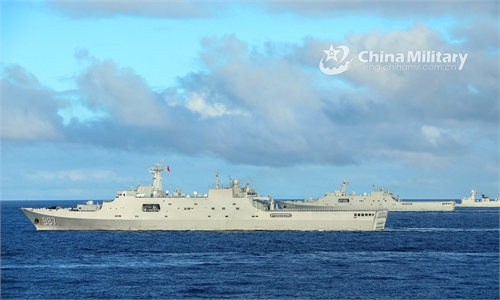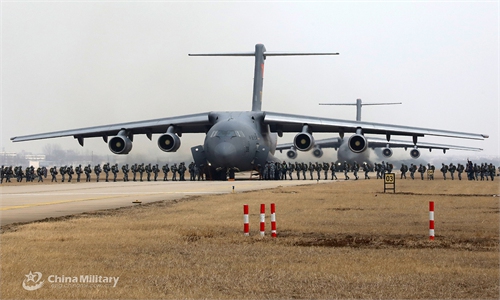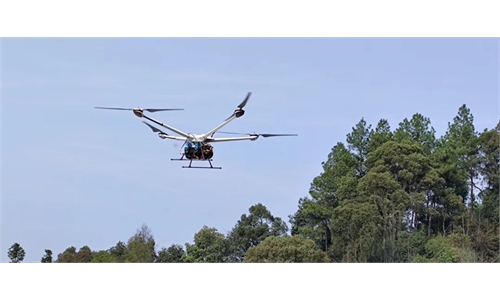US expeditionary mobile base enters S.China Sea for 1st time, sending a worrying signal

Xisha Islands in the South China Sea Photo: VCG
The USS Miguel Keith expeditionary mobile base, a type of large logistics support and command and control vessel, reportedly entered the South China Sea for the first time on Monday, with Chinese analysts saying on Tuesday that China should pay close attention to this alarming move, as the warship can potentially enable the US military to operate even more extensively in the region.
Sailing together with an Arleigh Burke-class destroyer, the USS Miguel Keith was spotted in the waters of the South China Sea southwest to the Bashi Channel on Monday, the South China Sea Strategic Situation Probing Initiative (SCSPI), a Beijing-based think tank, said in a release, citing commercial satellite imagery.
This is the first time the USS Miguel Keith entered the South China Sea since its deployment to the West Pacific in October 2021, the SCSPI said.
Having a displacement of more than 90,000 tons - making it among the biggest warship types second only to US aircraft carriers - the USS Miguel Keith is the third ship in the Lewis B. Puller-class expeditionary mobile base that can carry out a number of tasks including hosting the landing and takeoffs of heavy helicopters, providing logistics support and acting as a command and control center, the think tank said.
China should pay close attention to the USS Miguel Keith's movements and figure out ways to deal with it, because its presence in the South China Sea could significantly enhance the US military's operational capabilities in the region, a Chinese military expert told the Global Times on Tuesday, requesting anonymity.
As a huge platform that can carry a large number of equipment and supplies, an expeditionary mobile base, despite its lack of direct offensive capabilities, can provide logistics support including maintenance, repair, refuel, rearm and replenishment to other warships and helicopters, greatly increasing their endurance when operating far away from a land base, the expert said.
Such a warship can also serve as a flagship and conduct command and control missions, since the South China Sea is a large region, and the US, as a force from outside of the region, could need an on-site command center, the expert said.
The USS Miguel Keith played the flagship role during the Noble Fusion US-Japan joint drills in February, the SCSPI noted.
As a new type of strategic platform, the USS Miguel Keith will likely join more military drills and events in the South China Sea and nearby regions due to the ship's multirole characteristics, the SCSPI predicted.
While the expeditionary mobile base is of little threat to China in combat thanks to China's anti-ship capabilities including anti-ship ballistic missiles that can easily take out even aircraft carriers, it could be problematic in peace time, as it can allow the US military to make more provocative moves, analysts said.
Shortly before the expeditionary mobile base's movement in the South China Sea, US Indo-Pacific Commander Admiral John C. Aquilino personally flew to the South China Sea on a P-8A patrol aircraft in a close-in reconnaissance operation on Sunday, and again hyped China's "militarization" in the region.
Analysts warned that the move could be a political farce attempting to recreate the Ukraine crisis in the Asia-Pacific, rallying allies, partners and other countries in the region to confront China.




